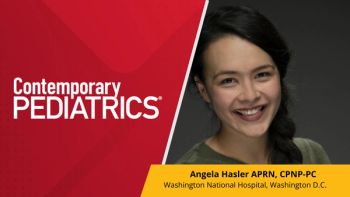Key takeaways:
- The LEAD Pediatric Initiative was launched to address persistently low national rates of universal lipid screening in children.
- Current guidelines recommend lipid screening once at ages 9–11 and again at 17–21, yet only 11% of U.S. youth in this age range have documented screening.
- Without universal screening, an estimated 30% to 60% of dyslipidemia cases may be missed.
A new effort to strengthen awareness and adoption of universal pediatric lipid screening (ULS) is underway with the launch of the Leveraging Evidence and Data to Drive (LEAD) Pediatric Initiative. In this video interview, Jonathan N. Flyer, MD, associate professor of Pediatrics at the University of Vermont (UVM); division chief of Pediatric Cardiology at the University of Vermont Health Network, explains the reasoning behind the initiative. Flyer is an author of the initiative's manuscript published in the Journal of Pediatrics.
Flyer noted that the initiative “brought together experts in industry, patient and family advocates and advisors, pediatric cardiologists, general pediatricians, implementation science and improvement science experts.” The group’s primary objective is to confront persistently low national screening rates despite long-standing recommendations from the American Academy of Pediatrics (AAP) and the National Heart, Lung, and Blood Institute.
According to Flyer, national guidelines advise that children receive one lipid screening between ages 9–11 years and another between ages 17–21, with earlier screening for children exhibiting elevated risk.
As Flyer explained, the goal is “to check their cholesterol—their low-density lipoprotein cholesterol, or LDL-C,” primarily to identify familial hypercholesterolemia (FH), an inherited condition that often goes undiagnosed until adulthood. Evidence suggests approximately 11% of youth in the United States between 9 and 21 years of age have documented lipid screening, and 30% to 60% of dyslipidemia cases may be missed without universal screening, Flyer and colleagues noted in the manuscript.
Importantly, Flyer emphasized that screening “is intended to be done in the primary medical home,” and can be carried out using non-fasting lipid panels, lowering the practical barriers to implementation. Screening may be performed in a clinic or via point-of-care testing. Understanding why screening rates remain low is the central mission of the LEAD Initiative.
“We don’t know. That was the purpose of getting the LEAD group together and bringing together a lot of key stakeholders," he said. The initiative examined the challenge through three lenses: families, clinicians, and healthcare systems. According to Flyer, “There’s really not one unifying diagnosis or one way to thread the needle,” highlighting the need for multifaceted solutions that address workflow gaps, access, communication barriers, and system-level support.
By creating a structured, multidisciplinary framework, the LEAD Initiative aims to advance implementation strategies and support pediatric clinicians in identifying youth with FH—a diagnosis that can also prompt cascade screening of family members, amplifying its public health impact.
Reference:
Flyer J, Malik S, Hartz J, et al. Accelerating Guideline-Recommended Universal Pediatric Lipid Screening: Launch of the LEAD Pediatric Initiative. The Journal of Pediatrics. September 17, 2025. doi:10.1016/j.jpeds.2025.114804









